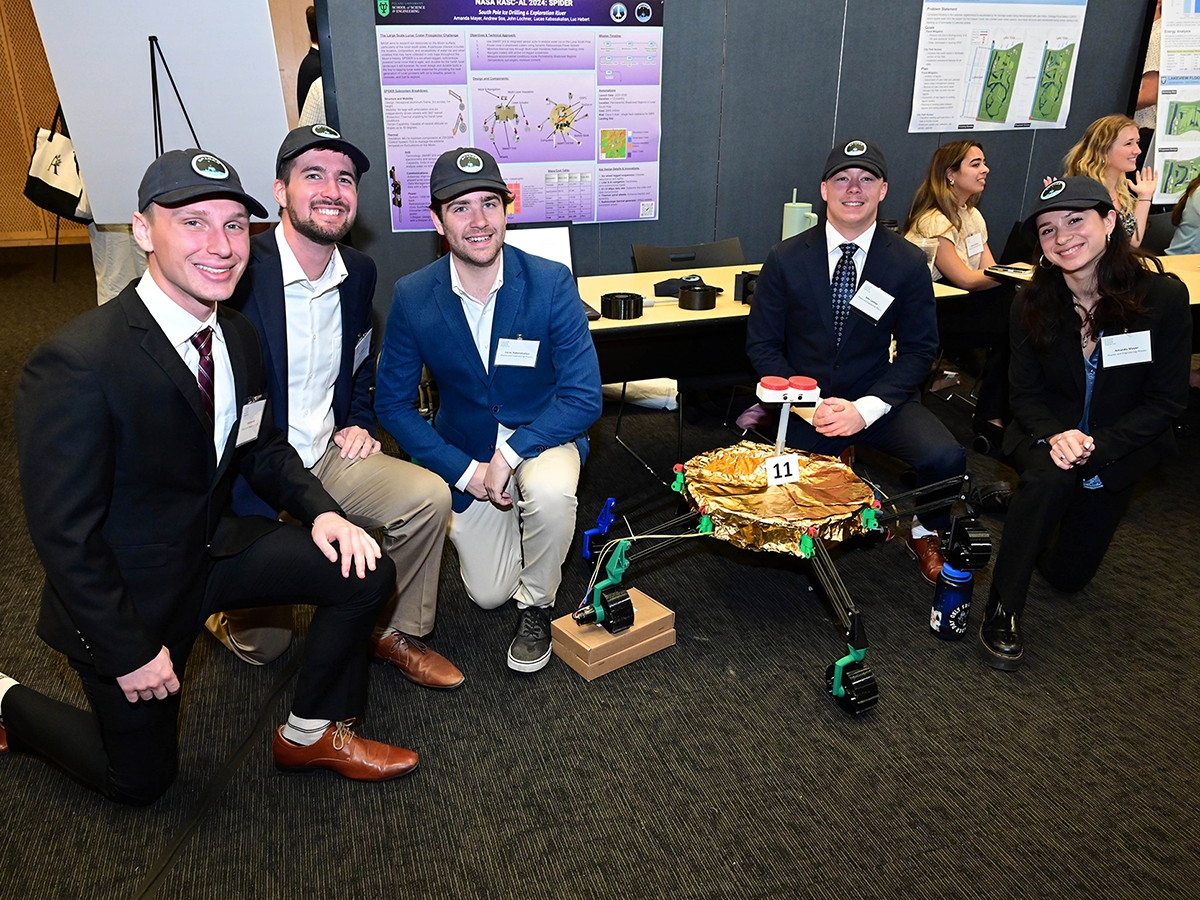Tulane students’ design for innovative lunar rover selected as finalist in NASA contest
A design for a plutonium-powered rover to hunt for water on the icy southernmost-tip of the moon has landed a team of Tulane students among finalists in a NASA contest to develop innovative new concepts for exploring the solar system.
The five Tulane engineering physics students will compete next week as one of 14 teams in the NASA Revolutionary Aerospace Systems concepts – Academic Linkage (RASC-AL) competition, a yearly competition for undergraduate and graduate students across the United States.
Luc Hebert, Lucas Kabasakalian, John Lochner, Amanda Mayer and Andrew Sos, all now graduates, spent the year working on the competition as their capstone project. They started work when the project themes were announced in early October and chose to work on the “Large-Scale Lunar Crater Prospector” theme.
“We were having these brainstorm sessions in the beginning where we were just not afraid to throw any ideas at the wall,” said Mayer. “With the research and trying to be as creative as possible, we went through a lot of different iterations.”
Their probe, South Pole Ice Drilling and Exploration Rover or SPIDER, is a 6-legged rover that can drill for water on the south pole of the moon. Each leg is able to move independently, allowing for increased stability in the treacherous craters of the moon’s south pole.
Because the rover is supposed to explore the south pole of the moon, which does not see the sun, solar power was not an option. They instead landed on using thermal power from a radioactive isotope and went from there. “Once we had that nailed down, the rover kind of built around that power source,” said Lochner.
One of the most important elements of the rover is the drill, since that is what will allow it to search for liquid water. “Something really unique about our drill is that it has an in-suite science system so all of the analysis is done there in real time within the drill,” Mayer said.
“You generally don’t want a bunch of dust and dirt in the rover,” said Lochner, “so when your drill requires that you bring it inside and then expel it, you have a lot of failure points.” Having all of the science done in the drill itself sidesteps many of those failure points. The team’s goal is to have SPIDER last for at least a year, so minimizing things that might need repairs is a must.
The students were guided by Matthew Barrios, professor of practice in the School of Science and Engineering. He has been the advisor to Tulane’s RASC-AL teams in the past as well, including the last time a Tulane team was a finalist, in 2022.
The team presented their model and plan at the Engineering Capstone Expo, which they said was great for building skills in communication and presentation that they will use at the RASC-AL competition. Having a small team that worked so closely over the course of the year has worked to their advantage here.
“We all could talk about all of the parts of the rover,” Kabasakalian said.
Lochner added, “I would trust any one of us to give a good representation and fill a whole 25 minutes by themselves.”
The team is finalizing their proposal before packing their bags and their model SPIDER and heading to the competition in Cocoa Beach, Florida. If they are one of the top two winners, the team will go on to present SPIDER at another conference to potentially be chosen by NASA to launch in the next 10 years.
All team presentations will be livestreamed and available to the general public starting Monday, June 10. The Tulane team will begin presenting their project at 8:50 am on Tuesday, June 11.

